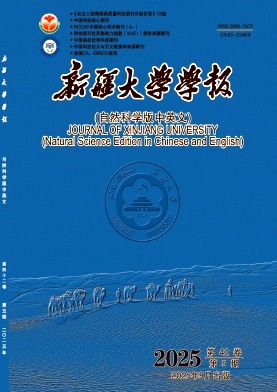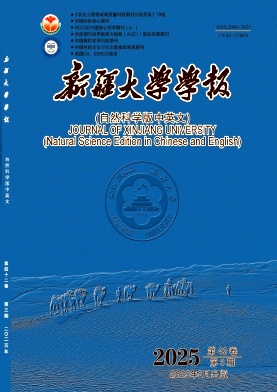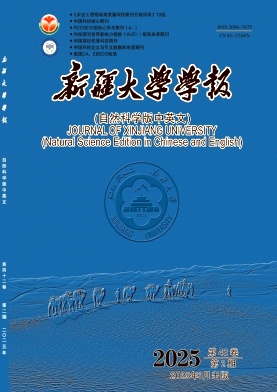Analysis of Driving Factors for Ethylene Consumption Demand Based on LMDI Decomposition Model
LIANG Jinqiang;LIU Danzhu;XU Xiaoling;YI Yong;HUANG He;SHAO Zimo;Ethylene consumption is closely related to economic development.Analysing shifts in ethylene demand provides deeper insights into economic growth and the structural layout of the ethylene industry.Focusing on the drivers of ethylene consumption demand in China,employing the logarithmic mean Divisia index(LMDI)decomposition model to quantitatively analyze the drivers of ethylene consumption demand.The decoupling relationships between ethylene consumption demand and economy,environment and population are explored,the influence among ethylene consumption intensity effect,ethylene purchasing power effect,investment redistribution effect,population effect,structure effect and ethylene consumption demand drivers are clarified,and the pulling role of ethylene downstream derivative products on ethylene consumption demand is revealed.This paper provides quantitative analysis for the market changes in China's ethylene consumption demand,and offers data support for the rational layout of the ethylene industry and the extension of the downstream ethylene product chain.
Construction and Solar Interfacial Evaporation Performance of the Coal Tar Pitch-Based Porous Carbon Hydrogel
ZHANG Zhiwei;TANG Yakun;LIU Lang;LIU Hongbo;XU Youyuan;CAO Yaqi;Coal tar pitch-based porous carbon is prepared using coal tar pitch as the raw material and CaCO_3as the pore-making agent,after undergoing oxidation modification with a mixed acid,it is utilized as a light absorber(NSCTP).Subsequently,it is combined with polyvinyl alcohol(PVA) to construct a coal tar pitch-based porous carbon hydrogel interfacial water evaporator(NSCTP@PVA).A systematic study is carried out to examine the microstructure,light-absorption properties,hydrophilicity,photothermal conversion characteristics,and solardriven interfacial water evaporation performance of light absorbers and evaporators.The results show that the NSCTP@PVA hydrogel evaporator exhibits excellent water transport characteristics and photothermal conversion efficiency,with a water evaporation rate of 1.28 kg·m-2·h-1 and photothermal conversion efficiency of 74.16% under1 kW·m-2 light intensity.Even after long cycling in a 3.5 wt% NaCl solution and simulated brine,the evaporation rate remains stable at 1.20 kg·m-2·h-1,demonstrating remarkable cycling stability and evaporation performance.Furthermore,the NSCTP@PVA hydrogel evaporator shows excellent performance in seawater desalination,brine purification,dye removal,and industrial wastewater treatment.
Characterization of Fluid Inclusions in Hydrocarbon Bearing Formations and Their Resource Indication Effects
HOU Mengrui;YANG Shuguang;LI Xin;WEI Bo;WANG Gang;FU Xuehai;SU Hongmei;JIA Chao;Fluid inclusion analysis serves as an effective tool for investigating hydrocarbon reservoir mechanisms.This study systematically reviews hydrocarbon-bearing fluid inclusions in sedimentary strata through four aspects:research targets,methodological frameworks,research advancements,and applications in hydrocarbon accumulation mechanisms.It summarizes the current research status,key achievements,and unresolved challenges in this field.The phase states,spatial distribution,and physicochemical properties of fluid inclusions in petroliferous basins constrain key parameters including hydrocarbon generation/expulsion timing,source rock maturity,migration pathways,reservoir formation timing,and paleo-reservoir identification,and provide critical constraints for hydrocarbon accumulation mechanisms.Fluid inclusion analysis in petroliferous basins is based on three fundamental assumptions:closed system,homogeneous system,and isochoric system.By reconstructing the physicochemical properties of fluid inclusions and integrating their geo dynamic formation processes,this approach effectively constrains hydrocarbon accumulation efficiency and heterogeneity in enrichment degrees.The homogenization temperatures of fluid inclusions cannot independently constrain hydrocarbon accumulation timing.Integrating apatite fission-track analysis,carbonate U-Pb dating,and fluid inclusion chronology are recommended to improve temporal calibration accuracy.Homogenization temperatures of fluid inclusions in deep to ultra-deep reservoirs fail to represent minimum entrapment temperatures.Application of laser Raman spectroscopy coupled with microthermometry,integrated with PVTx modeling,is recommended to precisely constrain pressure parameters and resolve ambiguities in minimum entrapment temperatures.Laser Raman spectroscopy cannot reliably quantify the organic composition of liquid hydrocarbon-bearing fluid inclusions.It is recommended to utilize Raman spectrometers equipped with UV excitation sources or 785 nm lasers to mitigate fluorescence interference in such inclusions.
Preparation of CeO2/NiO Ammonia Gas Sensor and Its Application in Breath Detection
DING Pengfei;ZHANG Hongyan;YANG Chen;ZHANG Haiyang;MA Xiujuan;LI Xudong;A high-performance ammonia(NH3) sensor is prepared based on CeO2/NiO composite,using a hydrothermal method.Experimental findings confirm that the CeO2/NiO composite significantly enhances the performance of the NiO-based NH3 sensor.This improvement is primarily due to the increase in oxygen vacancies(Ov),chemically adsorbed oxygen(Oc),and the proportion of Ni3+ on the surface of the CeO2/NiO.The CeO2/NiO sensor shows a high response to NH3,exhibiting response/recovery times of 1.8 s/0.9 s at the NH3 concentration of 5×10-6 mL/m3,with the theoretical lowest detection limit of98.651×10-9 mL/m3.Additionally,the CeO2/NiO sensor has been successfully applied in the simulated detection of Helicobacter pylori infection,highlighting its significant research value and potential application prospects in biomedical diagnostics.
Effect of Annealing Treatment on the Microstructure and Properties of Laser-Clad AlSi10Mg/40%WC Coatings
SONG Xuxiang;LI Xiao;FENG Xinyi;WANG Wenping;This study employs laser cladding technology to fabricate AlSi10Mg/40%WC coatings on SiCp/2009Al substrates,systematically investigating the effects of annealing treatments at 200℃,250℃C,and 300℃(for 2hours) on the microstructure and mechanical properties.Analysis by XRD,SEM,and EDS reveals that annealing facilitated Si precipitation and enhanced the uniformity of elemental distribution throughout the coating,while the phase composition remains unchanged.A progressive leftward shift in XRD diffraction peaks with increasing annealing temperature indicates reduced lattice distortion.Mechanical evaluations demonstrate that 250℃-2 h annealing decreased microhardness to 238.65 HV(15.9% reduction) while increasing fracture toughness(KIC) to31.28 MPa·m1/2(17.1% improvement).Wear performance analysis shows a 16.2% reduction in mass loss(decreased from 4.58 mg(unannealed) to 3.84 mg) and a stabilized friction coefficient around 0.30±0.02.Comparatively,while300℃ annealing achieves a slightly higher KIC enhancement(31.37 MPa·m1/2),it results in significant hardness degradation(to 223.16 HV) and increased wear loss(to 7.42 mg),attributed to Si phase coarsening.The 250℃-2h annealing treatment achieves a synergistic optimization of hardness,toughness,and wear resistance,providing critical theoretical insights for developing high-performance laser clad composite coatings.

Tracking the information about your manuscript
Communicate with the editorial office
Query manuscript payment status Edit officeCollecting, editing, reviewing and other affairs offices
Managing manuscripts
Managing author information and external review Expert Information Expert officeOnline Review
Online Communication with the Editorial Department




























































































































































































